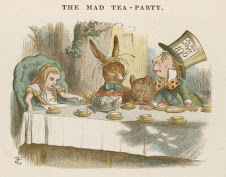The headline at New West is both deceptive and instructive: "Three Party System Fractures Idaho Legislature." Of course, Idaho is a solidly Republican state with a small Democratic minority. The state's Senate has 28 Republicans and 7 Democrats, while the House has 52 Republicans and 18 Democrats. The fracture (which may or may not be confined to the House) is internal to the Republican majority, and has allowed the Democrats to defeat two recent bills by siding with the one Republican faction or the other. The report notes, "It’s not unusual in states where one party has a lopsided majority for the majority to split in this way, making for themselves a “two-party” system where the second party does not constitute enough of an opposition."
A split majority, as in this case, is no majority at all. The question is how deep the split goes, and whether it can be exploited in the interest of actually opening up the two party system to represent a wider array of interests and views. Voters in states, or even districts, with such lopsided but fractured majorities may be most amenable to third party activism; people may not sense the same sort of "danger" in supporting a third party candidate that they do in races that are closely contested (the politics of the state of Minnesota notwithstanding). Consider, in this context, the recent election of Progressive Party candidate Bob Kiss for mayor of Burlington Vermont. Though this may have been a "perverse outcome" of the newly instituted instant runoff ballot system, the fact that a third party candidate even had a chance of winning at all is itself newsworthy. However, as Dale Sheldon at Least of All Evils has persuasively shown, this is likely a function of the fact that the Republicans effectively are the third party in liberal Burlington, while the Democrats and Progressives together constitute the major parties.
Subscribe to:
Post Comments (Atom)


No comments:
Post a Comment